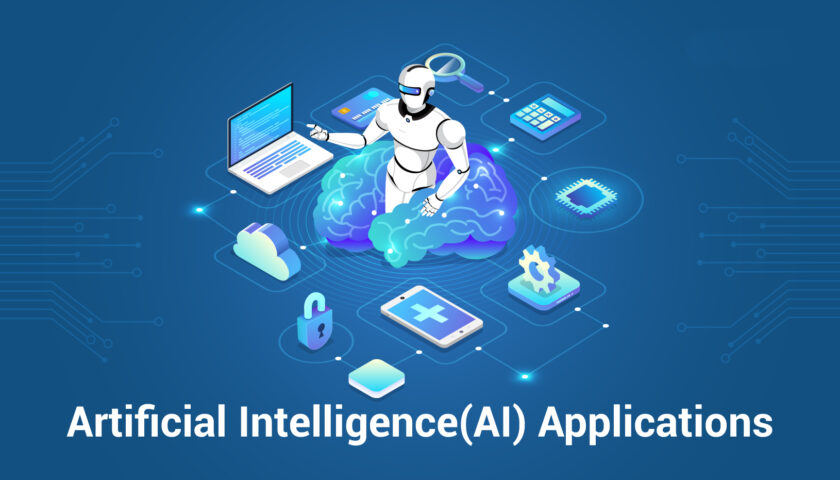Global Language Translation Software and Services Market Overview 2023-2028
The global language translation software and services market size reached US$ 55.9 Billion in 2022. Looking forward, IMARC Group expects the market to reach US$ 76.7 Billion by 2028, exhibiting a growth rate (CAGR) of 5.60% during 2023-2028.
Language translation software and services refer to specialized tools and solutions that facilitate the conversion of text or speech from one language to another. They employ various algorithms and techniques to ensure accurate and efficient language translation. They incorporate machine learning and artificial intelligence (AI) technologies to improve quality and accuracy. They allow users to choose tone, dialects, and industry-specific terminology. They aid in saving time on manual translation efforts and facilitating quicker decision-making. They ensure consistency in terminology and style across various documents and communications. They are widely used for translating documents, emails, and reports for international clients and partners. Besides this, they are also utilized by medical professionals to bridge language gaps with patients and access research and clinical data from different regions.
Global Language Translation Software and Services Market Trends and Drivers:
Rapid globalization and the expansion of businesses across borders represent one of the primary factors catalyzing the demand for language translation software and services. Additionally, the rise of e-commerce and online businesses is driving the demand for language translation software and services as companies seek to localize their websites and product listings to reach a wider customer base. Furthermore, the increasing adoption of remote work and the gig economy are fueling the need for seamless communication among individuals and businesses globally. Language translation services facilitate this by breaking down language barriers in virtual meetings, collaboration, and project management, contributing to the growth of the market. Moreover, continuous advancements in AI and machine learning technologies are enhancing the capabilities of language translation software. These technologies are leading to more accurate and context-aware translations, improving user experience, and expanding the applications of translation services beyond traditional documents to real-time conversations and content localization. Besides this, the governing authorities of several countries are imposing regulatory standards across industries, such as healthcare, legal, and finance, which is driving the need for language translation services for accurate translation of legal documents, medical records, and financial reports.
- Machine Learning and AI Advancements: Machine learning and artificial intelligence (AI) are at the forefront of language translation software. These technologies are improving translation accuracy and efficiency. Deep learning models, such as neural machine translation (NMT), have become mainstream, enabling software to understand context and nuances in language, resulting in more natural and accurate translations. The development of AI-powered chatbots and virtual assistants that can provide real-time translation services is another prominent trend.
- Multilingual Content Localization: As businesses expand into new markets, there is a growing emphasis on localization. Language translation services are now catering to more than just translation; they are helping businesses adapt content, including websites, apps, and marketing materials, to local cultural nuances and preferences. This approach enhances user experience and engagement, ultimately driving global success.
- Cloud-Based Solutions: Cloud-based translation software and services are becoming increasingly popular due to their scalability, accessibility, and cost-effectiveness. This trend aligns with the growing demand for real-time and collaborative translation solutions that allow multiple users from different locations to work on the same project simultaneously.
- Natural Language Processing (NLP): The integration of NLP technology is transforming the language translation landscape. NLP algorithms help machines understand human language, which is vital for context-aware translations. This technology is particularly beneficial for industries like customer support, where real-time communication in multiple languages is essential.
- Language Pairs Expansion: The demand for translation services between less common language pairs is on the rise. Traditional language translation software often focuses on widely spoken languages, but as businesses explore new markets and global consumers connect online, the need for translation between less common language pairs is growing. This trend has opened up opportunities for smaller players in the market.
- Quality Assurance and Security: With an increasing reliance on language translation technology in sectors like healthcare, legal, and finance, there is a growing focus on the quality and security of translations. Companies are implementing stringent quality control processes and encryption measures to protect sensitive data during the translation process.
- Specialized Industry Solutions: Many businesses are recognizing the need for industry-specific translation solutions. Translation services tailored to sectors like legal, healthcare, and e-commerce are gaining prominence. These specialized solutions offer domain-specific accuracy and compliance.
- Market Consolidation: The language translation software and services market is experiencing a degree of consolidation. Larger players are acquiring smaller companies to broaden their service offerings and expand their global reach. This consolidation is leading to a more integrated and comprehensive approach to language translation.
- User-Friendly Interfaces: User experience is critical for language translation software. Vendors are investing in user-friendly interfaces and interactive features that make translation tools accessible to a broader audience. This trend has also given rise to mobile apps for on-the-go translation needs.
- Customization and Personalization: Language translation is no longer a one-size-fits-all solution. Companies are increasingly looking for customizable and personalized translation services to align with their unique needs and branding.
Global Language Translation Software and Services Market 2023-2028 Analysis and Segmentation:
Top Key Players covered in this report are:
Acolad, Alpha CRC Ltd, AppTek, Babylon Software Ltd., Cloudwords Inc., Google LLC (Alphabet Inc.), International Business Machines Corporation, LanguageLine Solutions LLC (Teleperformance SA), Lionbridge Technologies LLC, Microsoft Corporation, RWS Group, Systran, Thebigword, TransPerfect, etc.
The report segmented the market on the basis of region, component and application.
Breakup by Component:
- Solution
- Rule-Based Machine Translation
- Statistical-Based Machine Translation
- Hybrid Machine Translation
- Services
- Translation
- Localization
- Interpretation
- Transcription
- Others
Breakup by Application:
- Banking Financial Services and Insurance (BFSI)
- Healthcare
- Manufacturing
- Government
- IT and Telecom
- Education
- Others
Breakup by Region:
- North America: (United States, Canada)
- Asia Pacific: (China, Japan, India, South Korea, Australia, Indonesia, Others)
- Europe: (Germany, France, United Kingdom, Italy, Spain, Russia, Others)
- Latin America: (Brazil, Mexico, Others)
- Middle East and Africa
Key highlights of the report:
- Market Performance (2017-2022)
- Market Outlook (2023- 2028)
- Porter’s Five Forces Analysis
- Market Drivers and Success Factors
- SWOT Analysis
- Value Chain
- Comprehensive Mapping of the Competitive Landscape
If you need specific information that is not currently within the scope of the report, we can provide it to you as a part of the customization.
About Us:
IMARC Group is a leading market research company that offers management strategy and market research worldwide. We partner with clients in all sectors and regions to identify their highest-value opportunities, address their most critical challenges, and transform their businesses.
IMARC’s information products include major market, scientific, economic and technological developments for business leaders in pharmaceutical, industrial, and high technology organizations. Market forecasts and industry analysis for biotechnology, advanced materials, pharmaceuticals, food and beverage, travel and tourism, nanotechnology and novel processing methods are at the top of the company’s expertise.
Contact Us:
IMARC Services Private Limited.
134 N 4th St. Brooklyn, NY 11249, USA
Email: Sales@imarcgroup.com
Tel No:(D) +91 120 433 0800
Americas:- +1 631 791 1145 | Africa and Europe :- +44-702-409-7331 | Asia: +91-120-433-0800, +91-120-433-0800





